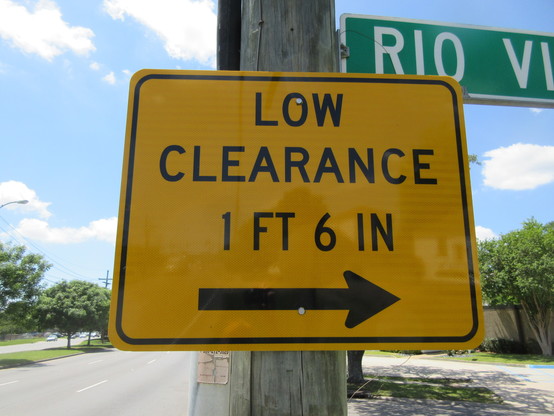2024-03-01 17:07:43
Clarence Thomas to decide if #Trump has immunity for the coup attempt his own wife planned - Boing Boing
https://boingboing.net/2024/02/29/clarence-thom…
2024-04-02 14:06:25
2024-04-01 18:40:57
🔊 #NowPlaying on fip
Chlorine Free:
🎵 Peacock
#ChlorineFree
https://open.spotify.com/track/4mH77mALaDfO0Qc4pdxB3a
https://chlorinefree.bandcamp.com/track/peacock
2024-05-01 08:40:39
This https://arxiv.org/abs/2312.03092 has been replaced.
initial toot: https://mastoxiv.page/@arXiv_mat…
2024-05-01 20:50:11
Very Low Clearance - Limbo to Enter.
Sign on Jefferson Highway, Old Jefferson, Louisiana.
Per other nearby signs, presumably 11 FT 6 IN (3.5 meters) was intended, rather than 1 FT 6 IN (45 cm).
#Louisiana #signs
2024-05-02 01:07:31
#Frieren claramente se passa num mundo do tipo #ForgottenRealms do #DungeonsAndDragons, com a maioria dos personagens podendo claramente ser identificados com vocações deste …
2024-05-01 07:26:18
$(\Delta 1)$ Vertex Coloring in $O(n)$ Communication
Maxime Flin, Parth Mittal
https://arxiv.org/abs/2404.19081 https://arxiv.org/pdf/2404.19081
arXiv:2404.19081v1 Announce Type: new
Abstract: We study the communication complexity of $(\Delta 1)$ vertex coloring, where the edges of an $n$-vertex graph of maximum degree $\Delta$ are partitioned between two players. We provide a randomized protocol which uses $O(n)$ bits of communication and ends with both players knowing the coloring. Combining this with a folklore $\Omega(n)$ lower bound, this settles the randomized communication complexity of $(\Delta 1)$-coloring up to constant factors.
2024-02-26 22:26:09
I figured that today might be a good day for a ruling on immunity and voting and all that stuff, but all I found was the fact that Clarence has a deal happening.
https://www.theonion.com/clarence-thomas-announces-50-discount-on-all-favora…
2024-05-01 06:55:25
A logarithmic approximation of linearly-ordered colourings
Tamio-Vesa Nakajima, Stanislav \v{Z}ivn\'y
https://arxiv.org/abs/2404.19556 https://<…
2024-04-30 07:20:33
Private graph colouring with limited defectiveness
Aleksander B. G. Christiansen, Eva Rotenberg, Teresa Anna Steiner, Juliette Vlieghe
https://arxiv.org/abs/2404.18692 https://arxiv.org/pdf/2404.18692
arXiv:2404.18692v1 Announce Type: new
Abstract: Differential privacy is the gold standard in the problem of privacy preserving data analysis, which is crucial in a wide range of disciplines. Vertex colouring is one of the most fundamental questions about a graph. In this paper, we study the vertex colouring problem in the differentially private setting.
To be edge-differentially private, a colouring algorithm needs to be defective: a colouring is d-defective if a vertex can share a colour with at most d of its neighbours. Without defectiveness, the only differentially private colouring algorithm needs to assign n different colours to the n different vertices. We show the following lower bound for the defectiveness: a differentially private c-edge colouring algorithm of a graph of maximum degree {\Delta} > 0 has defectiveness at least d = {\Omega} (log n / (log c log {\Delta})).
We also present an {\epsilon}-differentially private algorithm to {\Theta} ( {\Delta} / log n 1 / {\epsilon})-colour a graph with defectiveness at most {\Theta}(log n).





